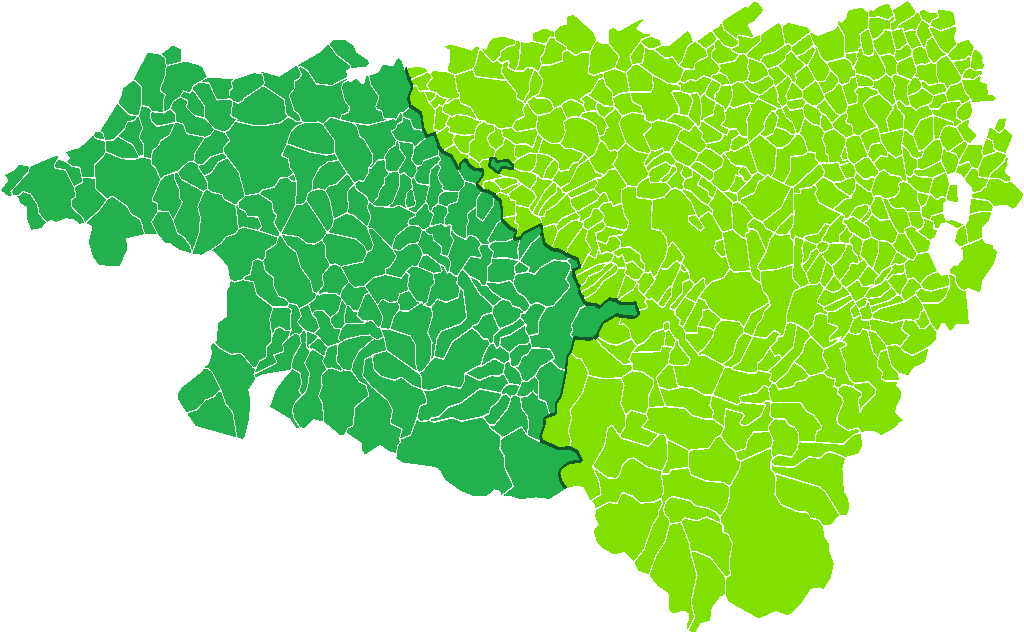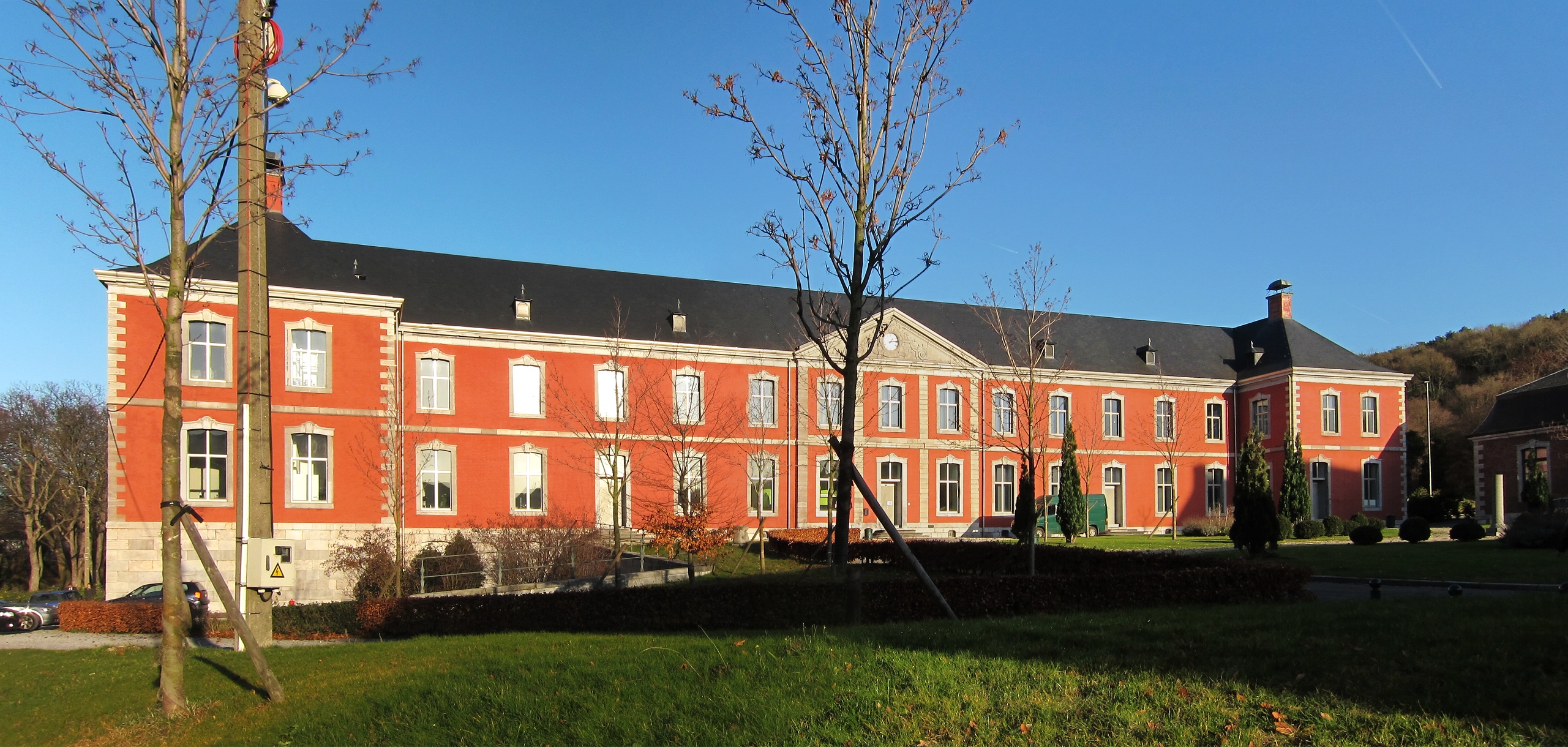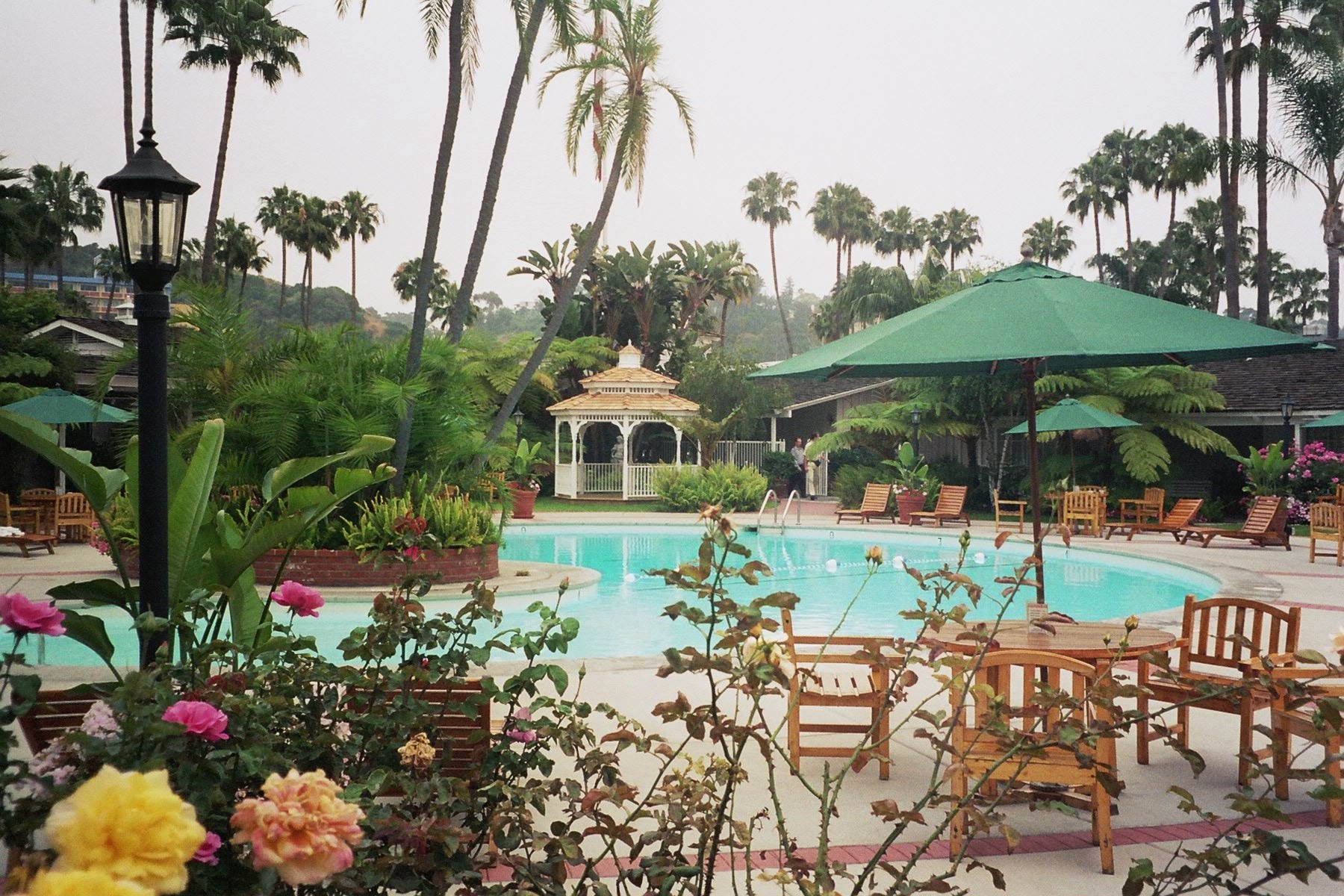|
Villers-Sainte-Gertrude
Villers-Sainte-Gertrude ( wa, Viyé-Sinte-Djetrou) is a village of Wallonia and a district of the municipality of Durbuy, located in the province of Luxembourg, Belgium.A Gazetteer of the World', volume 2 (Edinburgh, London and Dublin, 1856), p. 387. Villers-Sainte-Gertrude has been part of the province of Luxembourg only since 1839. Before that, it was part of the department of the Ourthe. The communities of Deux Rys and Roche à Frêne (detached from Harre) were attached to it in 1826. It was a fully-fledged municipality before the fusion of municipalities in 1977, and is now part of the Belgian town of Durbuy. The district consists of Grand-Bru and Villers-Sainte-Gertrude and of the localities Moulin des Roches, Hiva and Champs des Cognées. The village, located on a ridge at the foot of which flows the Aisne, a small tributary of the Ourthe and the stream of Vieux-Fourneau is a pleasant resort highly frequented by tourists during the summer period. History In 966, Villers ... [...More Info...] [...Related Items...] OR: [Wikipedia] [Google] [Baidu] |
Durbuy
Durbuy (; wa, Derbu) is a city and municipality of Wallonia located in the province of Luxembourg, Belgium. The total area is 156.61 km², consisting of the following districts: Barvaux, Bende, Bomal, Borlon, Durbuy, Grandhan, Heyd, Izier, Septon, Tohogne, Villers-Sainte-Gertrude, and Wéris. On 1 January 2018 the municipality had 11,374 inhabitants with the most populous town of the municipality being Barvaux. Durbuy, for commercial reasons, often calls itself the world's smallest city, although Belgium's official smallest town, since 2006, is Mesen. History In medieval times, Durbuy was an important centre of commerce and industry. In 1331, the town was elevated to the rank of city by John I, Count of Luxemburg, and King of Bohemia. In 1628 Anthonie II Schetz obtains the Seigneurie of Durbuy, by permission of Felipe IV of Spain. One of the people connected to the city was the son of Lancelot II: Charles Hubert Augustin Schetz, (1662-1726), Count of Durbuy. In 17 ... [...More Info...] [...Related Items...] OR: [Wikipedia] [Google] [Baidu] |
Communities, Regions And Language Areas Of Belgium
Belgium is a federal state comprising three communities and three regions that are based on four language areas. For each of these subdivision types, the subdivisions together make up the entire country; in other words, the types overlap. The language areas were established by the Second Gilson Act, which entered into force on 2 August 1963. The division into language areas was included in the Belgian Constitution in 1970. Through constitutional reforms in the 1970s and 1980s, regionalisation of the unitary state led to a three-tiered federation: federal, regional, and community governments were created, a compromise designed to minimize linguistic, cultural, social, and economic tensions. Schematic overview This is a schematic overview of the basic federal structure of Belgium as defined by Title I of the Belgian Constitution. Each of the entities either have their own parliament and government (for the federal state, the communities and the regions) or their own council a ... [...More Info...] [...Related Items...] OR: [Wikipedia] [Google] [Baidu] |
Ourthe
The Ourthe (; Walloon: ''Aiwe d' Oûte'') is a long river in the Ardennes in Wallonia (Belgium). It is a right tributary to the river Meuse. The Ourthe is formed at the confluence of the ''Ourthe Occidentale'' (Western Ourthe) and the ''Ourthe Orientale'' (Eastern Ourthe), west of Houffalize. The source of the ''Ourthe Occidentale'' is near Libramont-Chevigny, in the Belgian province Luxembourg. The source of the ''Ourthe Orientale'' is near Gouvy, also in the Belgian province Luxembourg, close to the border with Luxembourg. After the confluence of the two Ourthes at Lake Nisramont, the Ourthe flows roughly in north-west and later in northern direction. Near Noiseux it flows for a short distance through the province of Namur. After the municipality of Durbuy it flows into Liège Province. Eventually it flows into the river Meuse in the city of Liège. The most important tributaries of the river Ourthe are the Amblève and the Vesdre. Towns along the Ourthe are Houffalize (Ourt ... [...More Info...] [...Related Items...] OR: [Wikipedia] [Google] [Baidu] |
Pyrénées-Atlantiques
Pyrénées-Atlantiques (; Gascon Occitan: ''Pirenèus Atlantics''; eu, Pirinio Atlantiarrak or ) is a department in the southwest corner of France and of the region of Nouvelle-Aquitaine. Named after the Pyrenees mountain range and the Atlantic Ocean, it covers the French Basque Country and the Béarn. Its prefecture is Pau. In 2019, it had a population of 682,621.Populations légales 2019: 64 Pyrénées-Atlantiques INSEE History Originally named Basses-Pyrénées, it is one of the first 83 created during the |
Bayonne
Bayonne (; eu, Baiona ; oc, label= Gascon, Baiona ; es, Bayona) is a city in Southwestern France near the Spanish border. It is a commune and one of two subprefectures in the Pyrénées-Atlantiques department, in the Nouvelle-Aquitaine region. Bayonne is located at the confluence of the Nive and Adour rivers in the northern part of the cultural region of the Basque Country. It is the seat of the Communauté d'agglomération du Pays Basque which roughly encompasses the western half of Pyrénées-Atlantiques, including the coastal city of Biarritz. This area also constitutes the southern part of Gascony, where the Aquitaine Basin joins the beginning of the Pre-Pyrenees. Together with nearby Anglet, Biarritz, Saint-Jean-de-Luz, as well as several smaller communes, Bayonne forms an urban area with 273,137 inhabitants at the 2018 census; 51,411 residents lived in the commune of Bayonne proper. [...More Info...] [...Related Items...] OR: [Wikipedia] [Google] [Baidu] |
Val-Saint-Lambert Abbey
Val-Saint-Lambert Abbey (French: ''Abbaye du Val-Saint-Lambert'') was a Cistercian abbey in the Prince-Bishopric of Liège. It is situated in Wallonia in the city of Seraing on the right bank of the Meuse, in Belgium, about southwest of Liege. Founded in 1202, the abbey's monks were expelled during the French Revolution. In the 19th century, the building ruins were converted into the Val Saint Lambert crystal factory. The structure is considered to be an important example of Cistercian architecture. History Up to the year 1192, the site was almost deserted. The foundation of the abbey is attributed to Hugues de Pierrepont, Bishop of Liège, who in 1187 decided to establish Val-Saint-Lambert. Construction began in 1202 after he gave a tract of land and woods situated in what was then called the Champ des Maures to a group of monks. The abbey was a daughter house of Signy Abbey in Ardennes, France, which was a daughter house of Igny Abbey. Val-Saint-Lambert Abbey was inhabited b ... [...More Info...] [...Related Items...] OR: [Wikipedia] [Google] [Baidu] |
Gertrude Of Nivelles
Gertrude of Nivelles, OSB (also spelled ''Geretrude'', ''Geretrudis'', ''Gertrud''; c. 628 – 17 March 659) was a seventh-century abbess who, with her mother Itta, founded the Abbey of Nivelles, now in Belgium. Life Family and childhood The early history of Gertrude's family is not well documented. The anonymous author of her Early Middle Ages biography, ''Vita Sanctae Geretrudis'', only hints at her origins: "it would be tedious to insert in this account in what line of earthly origin she was descended. For who living in Europe does not know the loftiness, the names, and the localities of her lineage?"Vita Sanctae Geretrudis Gertrude's father, Pepin of Landen (Pippin the Elder), a nobleman from east Francia, had been instrumental in persuading King Clothar II to crown his son, Dagobert I, as the King of Austrasia. Due to her position at the palace, Gertrude's mother, Itta of Metz, was likely acquainted with Amandus, the Bishop of Maastricht. When Dagobert succeeded his father ... [...More Info...] [...Related Items...] OR: [Wikipedia] [Google] [Baidu] |
Abbey Of Nivelles
The Abbey of Nivelles, is a former Imperial Abbey of the Holy Roman Empire founded in 640. It is located in Wallonia in the town of Nivelles in Province of Walloon Brabant, Belgium. Foundation The abbey was founded by Itta of Metz, the widow of Pepin of Landen, Mayor of the Palace of the Kingdom of Austrasia, with their daughter, Gertrude of Nivelles. Christianity was not at all widespread in that place and time. It was only the development of cities and the initiative of bishops that led to a vast movement of evangelism, which led to the flowering of monasteries everywhere in the seventh and eighth centuries. Gertrude's ''Vita'' describes how Bishop Amandus came to Itta's home, "preaching the word of God. At the Lord's bidding, he asked whether she would build a monastery for herself and Christ's handmaid, Gertrude". Itta founded Nivelles as a Benedictine monastery of nuns. It later became a double monastery, with one section for monks and another for nuns. However, after they ... [...More Info...] [...Related Items...] OR: [Wikipedia] [Google] [Baidu] |
Emperor Otto I
Otto I (23 November 912 – 7 May 973), traditionally known as Otto the Great (german: Otto der Große, it, Ottone il Grande), was East Francia, East Frankish king from 936 and Holy Roman Emperor from 962 until his death in 973. He was the oldest son of Henry the Fowler and Matilda of Ringelheim. Otto inherited the Duchy of Saxony and the kingship of the Germans upon his father's death in 936. He continued his father's work of unifying all Germans, German tribes into a single kingdom and greatly expanded the king's powers at the expense of the aristocracy. Through strategic marriages and personal appointments, Otto installed members of his family in the kingdom's most important duchies. This reduced the various dukes, who had previously been co-equals with the king, to royal subjects under his authority. Otto transformed the church in Germany to strengthen royal authority and subjected its clergy to his personal control. After putting down a brief civil war among the rebellious ... [...More Info...] [...Related Items...] OR: [Wikipedia] [Google] [Baidu] |
Resort
A resort (North American English) is a self-contained commercial establishment that tries to provide most of a vacationer's wants, such as food, drink, swimming, lodging, sports, entertainment, and shopping, on the premises. The term ''resort'' may be used for a hotel property that provides an array of amenities, typically including entertainment and recreational activities. A hotel is frequently a central feature of a resort, such as the Grand Hotel at Mackinac Island, Michigan. Some resorts are also condominium complexes that are timeshares or owned fractionally or wholly owned condominium. A resort is not always a commercial establishment operated by a single company, but in the late 20th century, that sort of facility became more common. In British English, "resort" means a town which people visit for holidays and days out which usually contains hotels at which such holidaymakers stay. Examples would include Blackpool and Brighton. Destination resort A destinatio ... [...More Info...] [...Related Items...] OR: [Wikipedia] [Google] [Baidu] |
Aisne (river)
The Aisne ( , , ) is a river in northeastern France. It is a left tributary of the Oise. It gave its name to the French department of Aisne. It was known in the Roman period as Axona. The river rises in the forest of Argonne, at Rembercourt-Sommaisne, near Sainte-Menehould. It flows north and then west before joining the Oise near Compiègne. The Aisne is long. Its main tributaries are the Vesle, the Aire and the Suippe. The Battle of the Axona was fought near there between the Romans and the Belgae in 57 BC. Three Battles of the Aisne were fought in the Aisne valley during the First World War. Places along the river Departments and towns along the river include: * Meuse * Marne: Sainte-Ménehould * Ardennes: Vouziers, Rethel * Aisne: Soissons * Oise: Compiègne * Aisne: Berny-Rivière Navigation The river Aisne was used for commercial navigation as early as the Celtic period, and rafts were floated from a long distance above the present limit of navigation at Vailly ... [...More Info...] [...Related Items...] OR: [Wikipedia] [Google] [Baidu] |




.jpg)
